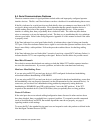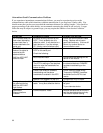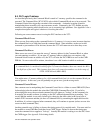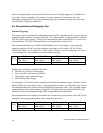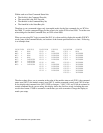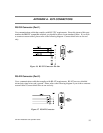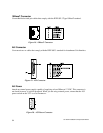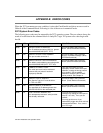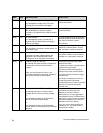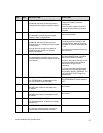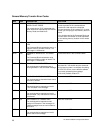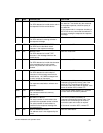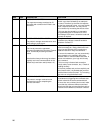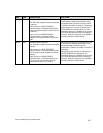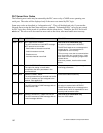
CTI 2572 Installation and Operation Guide
95
APPENDIX B. ERROR CODES
When the 2572 encounters an error condition, it raises the CMD ERR bit and places an error word in
Offset 0 of the Command Block. Following is a list of the errors in numerical order.
2572 System Error Codes
The following error codes may be returned by the 2572 operating system. They are almost always the
result of invalid data in the command block or faulty PLC logic. All system error codes begin with
hex 00.
HEX DEC DESCRIPTION SOLUTION
0086 134 INVALID LOCAL IP ADDRESS
The IP address cannot be 0.0.0.0 or greater
than 223.255.255.255 (DFFF FFFF)
Correct the data in the Command
Block. (Write EEPROM Command)
0087 135 INVALID TCP/UDP PORT NUMBER
The port number cannot be 0.
Correct the data in the Command
Block or command message. (Write
EEPROM Command)
0088 136 INVALID DEFAULT ROUTER ADDRESS
The default router address cannot be greater
than 223.255.255.255 (DFFF FFFF hex)
Correct the data in the Command
Block. (Write EEPROM Command).
0089 138 CANNOT RE-DIRECT PORT
The serial port could not be redirected
because the port protocol has been
improperly selected.
This may occur when you have
improperly set the module serial port
switches, causing the wrong protocol
to be loaded. Set the module
switches to select the NITP/CAMP
server protocol. See Chapter 2.
008A 139 INVALID TYPE OF SERVICE
The Service Type for IP must be either:
1= TCP or 2=UDP
Correct the data in the Command
Block. (Serial Redirect Command)
008B 140 INVALID REMOTE IP ADDRESS
You specified an IP address greater than
223.255.255.255 for the redirected port.
Correct the data in the Command
Block. (Serial Redirect Command)
008C 141 PORT ALREADY REDIRECTED
You attempted to redirect a serial port that
was already redirected.
You must first end the current
redirection by setting the serial port to
local (IP = 0.0.0.0). Then you can
redirect.
You may get this error of you
inadvertently trigger the serial re-direct
command block twice. If so, correct
your PLC logic.



